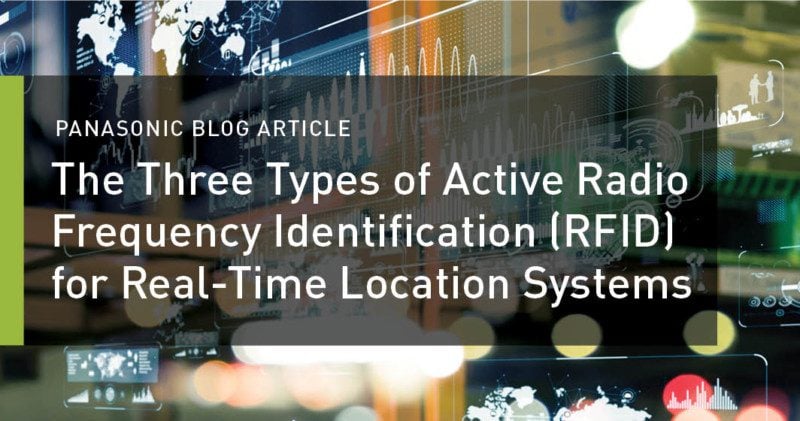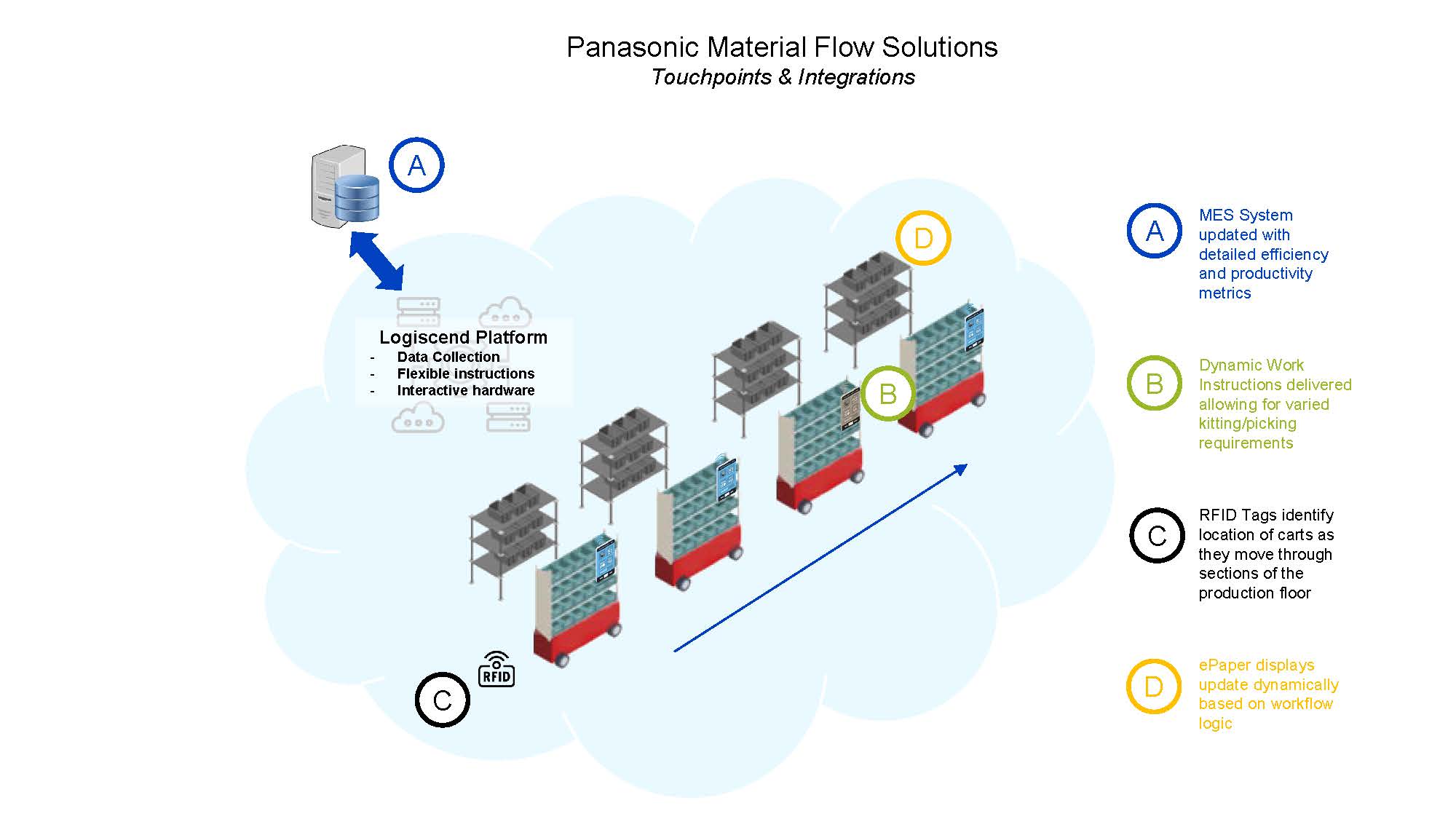The Three Types of Active Radio Frequency Identification (RFID) for Real-Time Location Systems (RTLS)
- Panasonic Blog
- 3 mins
Real-time location systems (RTLS) have become increasingly popular in the manufacturing industry for plant managers and executives looking to improve the speed and accuracy of their operations.
The reason? Traceability.
By using wireless tags attached to objects and fixed reference points to determine locations based on the tags’ wireless signals, RTLS can provide factory workers with the exact location and station of a specific item. Logiscend combines this wireless tracking capability with dynamic visual instruction and two-way communication to enable smart manufacturing.
But not all Real-Time Location Systems are made the same. They can be powered by a variety of active RFID technologies, all of which offer their own positives and negatives. Depending on the operational needs of a manufacturing operation, one may work better than the others.
Let’s take a look at three common active RFID technologies – sub-Gigahertz (sub-GHz), Bluetooth Low Energy (BLE) and ultra-wideband (UWB) – as well as their unique traits and common manufacturing use cases.
Sub-Gigahertz (Sub-GHz)
The term “sub-Gigahertz” can be used to identify any wireless technology that utilizes a frequency band less than 1 gigahertz (GHz). This common type of tech can be found in a variety of applications such as handheld wireless home utility meter-readers.
Using a relatively small amount of power, sub-GHz signals travel distances greater than the ranges reached by higher RTLS frequency signals. In some cases, sub-GHz technology can transmit information over a distance of several kilometers.
For RTLS applications, the key drawback of sub-GHz technology (as compared to higher frequency RTLS) is decreased accuracy, which is primarily due to longer wavelengths used by sub-GHz. As a result, sub-GHz may not reach a level of accuracy that many manufacturing operations require. For example, while sub-GHz could identify the general location of a vehicle in a parking lot within several car-lengths, it would not be able to identify the specific location of a bin inside a factory.
These traits make sub-GHz an ideal technology for applications that need to track assets outside of its factory walls. If an automotive manufacturer requires tracking of vehicles in a parking lot, or if a contractor wants to find the general location of equipment spread across a large construction site, sub-GHz technology would be an ideal fit to integrate within their real-time location systems.
Ultra-wideband (UWB)
By far the most accurate active RFID-based technology for real-time location systems, ultra-wideband RTLS can identify the location of an object within 10 centimeters of accuracy.
UWB uses Time Difference of Arrival (TDoA), a technique that measures the difference in the “time-of-flight” of the tracked object’s transmissions, to triangulate on the object’s location. Additionally, by using multiple “receive antennas,” fixed receivers may determine the Angle-of-Arrival (AoA), further improving the location accuracy of the tracked object. By using TDoA (and optionally AoA), multiple fixed receivers work together to determine the precise location of an object.
The biggest drawbacks for UWB RTLS over sub-GHZ and BLE are the higher price point and the increased power required for transmissions. At the component level, an UWB device must be added to the bill of materials for each device being tracked. Typically, the tracked devices each already contain a BLE radio for communications.
UWB’s superior accuracy makes it an ideal fit for manufacturing operations where specific parts within pallets need to be located. While BLE can deliver much of the same accuracy across the floor, UWB is the way to go for locating individual items that are relatively small.
Bluetooth Low Energy (BLE)
Of the three RTLS technologies discussed, BLE hits a sweet spot between price (lowest) and accuracy (acceptable for most applications).
The commercial availability of BLE technology, with widespread applications from cell phones to car radios, has dramatically lowered the cost of implementing RTLS with BLE, increasing the potential for adopting BLE technology for use in Real-Time Location Systems. Furthermore, BLE can generate sub-meter accuracy, making it an attractive option for most manufacturing operations needing to locate assets within a factory. BLE is globally supported and standards-based, meaning devices that incorporate BLE chips are capable of supporting RTLS if specifically programmed to do so.
Panasonic’s recently released Logiscend Software 3.0 integrates BLE tags and locators into the Asset Tracking Application of the Logiscend software. This provides customers the ability to track and locate any part with a high degree of accuracy and lower total cost of ownership, due to long battery performance and lower device pricing. BLE tags can be combined with Panasonic VIEW tags for the additional benefit of eliminating paper and providing real time instructions to the manufacturing floor.
This combination of low cost and acceptable accuracy makes BLE a strong fit for operations located entirely within the factory walls. Plant managers can know the location of an asset or a pallet at any given time, within roughly one meter.
Each of these different technologies comes with unique benefits and drawbacks. The important takeaway is to work with your solution provider to determine which technology best suits your factory operations, to improve operational efficiency for your business.


